E-Commerce
E-commerce is also known as electronic commerce or internet commerce. These services are provided online over the internet network. You can review our page to get detailed information about e-commerce and to examine the processes.
What is E-Commerce?
E-Commerce, as in the past and in the future, is the electronic, that is, virtual environment of trade, including retail sales and bulk sales within the sector. E-Commerce is a business branch that has many worldwide languages, not only the concept of trade, but also business, technology and informatics. Today, it is a virtual merchandising that is easy to establish and low cost, where many brands add strength to the power of many brands, from the most distinguished enterprise branches. In many initiatives, the power of e-commerce has been proven many times with definitions such as "brick to click" or "click to brick".
With only a few operations in e-commerce
- You can open all your products to the world.
- You can achieve high turnover
- You can improve the image of your brand.
- You can expand your business volume and capacity.
- You can create your innovative and sustainable business field.
- You can recognise your competitors and compete.
- You can express yourself much better with social media.
- You can increase the loyalty of your customers.
- Thanks to CRM technology, you can constantly bring your customers back.
The benefits of e-commerce have reached a very different dimension, especially with the growth of mobile technology. In short, if you have a store, there is no obstacle for you not to open e-commerce. Especially for entrepreneurs, e-commerce is a point-shot source of income.
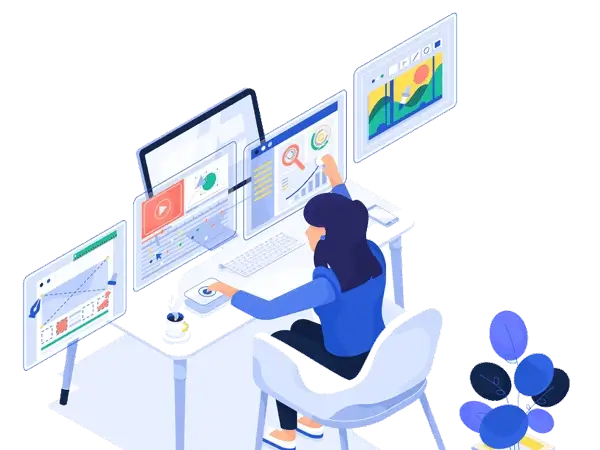
Horizontal E-Commerce vs. Vertical E-Commerce What is it?
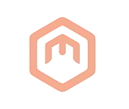
Criteria of Vertical E-Commerce
- Consists of only one main category or sectoral section. Example: Footwear
- The manageability of the products is less varied and controlled.
- When considered sales-oriented, customer segmentation comes to your site in a way that knows the product to be purchased.
- Campaigns and promotions are quickly interacted.
- High command of products, operation can be managed with few personnel.
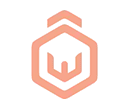
Criteria of Horizontal E-Commerce
- It consists of multiple categories and sectoral sections. Example: Clothing, Toys, FMGC
- Managing products requires specialists and managers for each category.
- When the sales focus is considered, you can offer a wide variety of products for your customers.
- For quick interaction in campaigns and promotions, it may be necessary to prefer categorical campaigns and promotions.
- The products have complex structures. This is why staff organisation is necessary.
When we consider both backbones, they have their own positive or problematic aspects. While the product class is low in the vertical, you can meet your customer with more products in the horizontal. While product management will be easier and more practical due to fewer products on the vertical site, this situation on the horizontal E-Commerce side has a more complex setup.
In addition, the marketplace has also entered the backbones. We will discuss the details of this below.

How is the Development of E-Commerce in the World?
E-commerce over the internet has drawn a separate e-commerce model in almost every country. For example, between America and China, on the one hand, between Europe and Asia, many brands and systems of E-Commerce come to the fore. In particular, the USA, UK and China achieve very high volume sales in many branches and categories of e-commerce. When we examine the structures of these countries, they also have very high technologies in information technologies. High technology, combined with the efficient internet age, can increase the power of E-Commerce.What are the Brands that Domaine E-Commerce in Global?
There are brands that dominate E-Commerce in the world based on brand and country. If we go through America, EBAY and Amazon group, if we look from the Asian side, we can say that Ali Group (ali Express, alibaba) dominates as the largest in the sector.Aliexpress and Alibaba sell to more than 200 countries worldwide. Amazon receives an average of 2.2 billion visits per month. On the Ali group side, 1.5 billion visits are seen. As can be seen, we can say that the leaders of the sectors are at the top of the system with very high volumes.Information
How is the Development of E-Commerce in Türkiye?
E-Commerce in Türkiye is starting to be used in 1999 with the internet is becoming almost widespread. The most important point here is that e-commerce has started with the introduction of poses experienced on the banking side in those years.
Which Brands Dominate E-Commerce in Türkiye?
We can list many brands that dominate e-commerce in Türkiye. Especially Hepsiburada.com, gittigidiyor.com, n11.com and trendyol are among the brands that exemplify and dominate e-commerce in many lanes. In addition, even more different sales channels in Türkiye, which is located between sahibinden.com traffic and 2nd hand products are among the largest. It is among the brands that are taken as an example and receive millions of clicks every day. In the developing e-commerce world, it is among the biggest expectations that such big brands will increase further as a result of the competition with the world.

C2C
One of the e-commerce business models is the Customer-to-Customer business model. This business model, which extends from consumer to consumer, can be said to be all of the processes that we are all very familiar with at the moment, where we sell both zero and second-hand products. For example, applications such as GittiGidiyor or Letgo, Dolap are the closest examples to C2C. sahibinden.com is among these examples.B2B
E-Commerce is one of the business models. In short, we can say that it is an e-commerce model between companies. For example, in a system where you have dealers, the purchasing processes of your dealers from your centre can be a B2B example. The communication model between Eczacıbaşı and Vitra e-dealers can be an example of this.
B2C
It is one of the different types of e-commerce business model. It stands for "Business to Customer". B2C is the most common business model we currently see in e-commerce. Many e-Commerce brands manage their operations with B2C. Companies that purchase from their own warehouses or suppliers make their sales to you, their customers. For example, Hepsiburada.com or ebebek.com.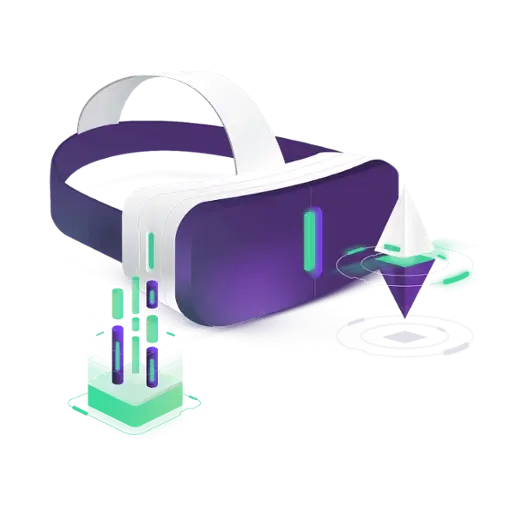
What is E-Commerce Infrastructure? What Are They?
E-Commerce infrastructure is the most basic e-commerce component with a management panel such as admin, which allows your products and many content you want to sell to be listed, hosted and displayed on your site, where your customers can visit, find their products and easily provide all the steps in the process leading up to the sale.E-Commerce infrastructures have content management systems, which we call CMS as a system, and many content, prices, images are provided on this screen.E-Commerce infrastructure can be packaged or open-coded. The main point here is which infrastructure you will choose in line with your needs. We have many criteria for choosing an infrastructure. You can read them in detail on our blog page.We can quickly note the parts to be considered in the selection of infrastructure:- The suitability of your products for that infrastructure (variant),
- Responsive supported,
- Payment infrastructures,
- Intervention in design,
- ERP Integration,
- Cargo Integrations,
- SEO Management,
What are the Differences Between Off-the-shelf Software and Open Source?

Criteria of Vertical E-Commerce
- It is package based. Level by level package programmes increase.
- You can have features according to the level you choose.
- Additional costs may be required for the upgrade and any updates you require.
- An annual budget may be required.
- Improvements are not entirely under your control.
- You are connected to ticket systems and may require technical support for your revisions.

Open Coded Software
- There is no package option. It consists of a single code system.
- You can develop it as much as you want.
- Software support may be required.
- You can do whatever you want in site design.
- It offers an alternative that can be intervened especially in search optimisation.
- 3RD integrations are open in connection with your software strength.
When we consider both types, we can say that they have their own advantages. While you can go live immediately with a shopify to quickly open your site, unfortunately you may not get an instant answer to place the images you want so much. Here is such an open code for these situations will be able to meet almost all your needs for free. But this time software knowledge will be required.
What are Open Source Examples?
There are many open source E-Commerce software that are widely used in the world.- Magento
- Woocommerce
- Opencart
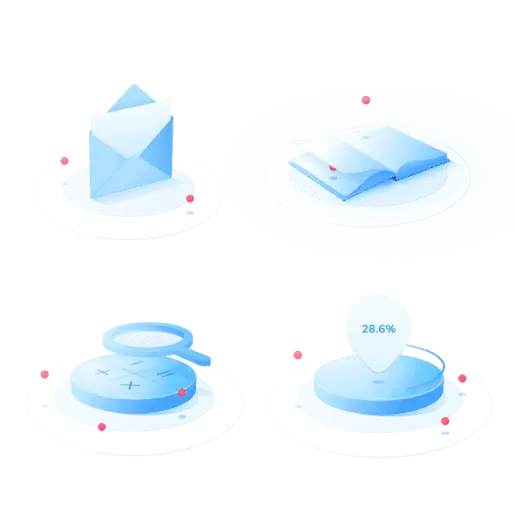

Information
What is Dropshipping? What are the differences between Amazon and Shopify?
Dropshipping; It is a new business branch that summarises that dropshipping can be done even across continents. Especially since 2018, we started to hear quite often.
Theoretically, your customer orders the product from you, and you forward that order to the manufacturer and supplier brand from which you supply your products. This organisation ships the product to your customer on your behalf. In the meantime, your earnings from your product is your sales you earn when buying from wholesale quantity. You have a structure that does not require effort both when selling and sending. The important point here is the competitive approach of the product sold. Thousands of sellers like you can sell the same product at different prices. A very good tracking mechanism should be used for this.
- Sales with Amazon can be divided into two categories. Sales to Europe/America amozon potentials with Türkiye amazon are available. You can use a single account for all of Europe. It is a high potential sales channel with more than 30 product categories.
- Shopify is an e-commerce infrastructure system that provides you with infrastructure. Thanks to very affordable prices, you can set up your E-Commerce store in a very short time. In addition, it is a very suitable infrastructure for worldwide sales with different currency methods.
You can choose your infrastructure based on these criteria.
BACKGROUND
What are E-Commerce Consumer Statistics?
When we consider e-commerce with figures, we get very different figures. For example, the average internet usage in Türkiye is around 70%. In fact, if we look at this figure, we are pushing the top 10 in the developed countries class. E-Commerce is around 40% within this 70%. Of course, 2019 figures are expected to be fully finalised. We can say that consumers are still getting acquainted with e-commerce. We can say that e-commerce and mobile have caught an acceleration here by combining. The fact that growths around 30% are seen almost every year gives very positive signals for the future.
While 90% of consumers prefer mobile access, the most used payment method is Credit Card. In the purchasing process of products, we mostly use search engines, in-site searches and frequently preferred comparison sites.
If we look at the categories with the top 3 most product sales in Türkiye
- Clothing
- Food
- Travelling
It is seen in the foreground. It is a source that can be used as an example for entrepreneurs.
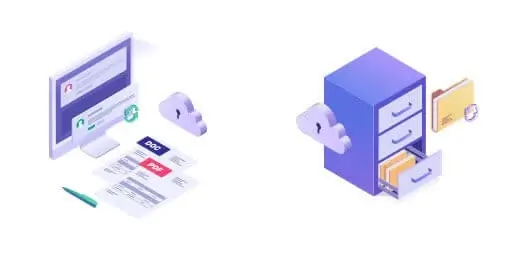
What are Price Comparison Sites and Consumer Behaviour?
Price comparison sites are the most frequented pre-purchase sites for consumers. In particular, traditional and well-established comparison sites such as akakce make a good contribution to the final price before purchasing a product and accelerate decision-making. This technology is so popular that even Google uses the structure in its own system and displays it directly in search results.There are two biggest problems for consumers. One is price and the other is delivery. Before moving to the delivery part, the customer side wants to be very sure by the price. By adding shipping costs, it sees the final price and chooses the advantageous site. In this context, they are very useful sites for the consumer. Another point here is that brands that write prices should not forget that they will be in such a competition. Sometimes you may be in a very good position in price, but if your cargo is too high, it may not be that sale. So the consumer may have seen you cheap on akakcede, but if your cargo is high, there may be no sales.Therefore, 360-degree pricing is required.What are Payment Systems?
The most important role in the sales process that extends to the consumer is the payment part, which is the last step. You can have your sale completed with many alternatives you can offer here. If we take a quick look:- Credit Card Sales
- Sales with Debit / Debit Card
- BKM Express / Wallet applications
- Sales with Masterpass / Card storage
- Money order / Payment at the door
Physical Store vs. E-Commerce What is the Difference?
One of the biggest problems of your physical store is the audience you can reach. If we consider that you will rent on a street while the store wants to improve its physical conditions, your sales will be realised at very high costs. However, when you are a brand with an e-commerce store, it can be set up overnight, you can integrate all banks with a single button, you can show thousands of products without stock and listing problems, and you can reach millions of audiences during the day. In addition to all these, do not forget that you can sell from Anatolia to the world.What is Logistics and Inventory Management?
One of the biggest problems of an e-commerce is unpredictable logistics and inventory management. Moreover, these are such deep issues that they are not taken into account in many e-commerce brands, including the concepts we call inventory cost in inventory management. While many big brands calculate the shelf cost in stock, we can say that our brands, which are at the beginning of the road, unfortunately cannot cope with supplying the product.The main point here is that you have the production and stock of the product you will sell. Either you will have stock, or you will have a warehouse and you will send your products from there. The inability to supply, which we often see in stock management, unfortunately causes a lot of problems on the customer side. Selling a product that does not exist is a loss of both turnover and image.Stock forecasting can be done to store stocks. For this, you can stock the products you trust in sales or measure them with social media.Importance of the Branding Process
Branding is one of the most important aspects of a customer coming on e-commerce. Consumers thoroughly examine your brand before trusting you. Such as what it has done, where it was established, how many complaints it received. While brands that maintain their brand image in e-commerce make a great contribution to their sales, brands will have to constantly improve themselves in the dynamics of being a "brand". In addition, branding provides superiority in competition.What are the Dynamics of Branding?
We think that one of the biggest processes for branding is to have a manifesto. If a brand does not have a manifesto to take shelter behind, unfortunately, it is in serious loss on the way to branding.- Loyalty policy
- Manifesto
- Objectives
- Staff behaviour
- R&D
Price Oriented Strategy vs. What is Service Oriented Strategy?
The price-oriented strategy that we see very often in e-commerce sterilises the process due to both frequent advertisements and the fact that many brands can compete at a certain rate. You are a brand and you will be able to compete with price up to a certain point. Otherwise, the profitability in your hand will melt away. In order not to experience this, a service-oriented strategy that the consumer will like more can be applied. In order to do this, by analysing the competitor- Shipping Methods,
- Payment Terms,
- Warranty Scopes,
- Return policies and after-sales customer service
What is E-Commerce via Social Media?
One of the marketing methods that plays the most active role in e-commerce is social media. Social media is very effective in terms of both promoting products and showing your brand due to its high interactions.The original content source triggers the concept of a kind of whisper newspaper with WOM Word of Mouth Marketing and Influencer communication. Consumers will want to buy from you what they see on Instagram. It is possible to turn into sales with a corporate image and appropriate language.Information
What are UI and UX?
- UI is the user interface that comes from user interface. So we call the designs of your sites and blogs UI. UI is designed in accordance with today's trends and fonts and the process is left to UX.
- UX is actually more concerned with how the user interacts on the site rather than designing an interface.The aim is to make you do what you want to do in a simple, smooth and easy way, that is, to give you a good experience.
What is A/B Testing?
The A/B testing process is the comparison of two different scenarios you want to apply on your site. Two different banners are presented in two different environments and with software specific to the customer base. The one with the most clicks and high performance is preferred and the winner of A/B is determined. According to the A / B test environment, A / B / C / D can also be done in 25% traffic-demonstrations. In A / B, 50% orange button 50% red button can be compared. If 50% red received more clicks, the winner is red.Information
What are the Basic Expectations of E-Commerce Customers?
We have summarised for you what e-commerce customers expect from their brands:
Convenient cargo tracking from the Internet; Long time will not be spent for tracking on the Internet, it also reduces the pressure on the Call-Centre.
Request to be informed by SMS-Mail in all movements of the cargo.
Fast actions are expected when any problems arise. Long processes undermine the customer's trust in cargo companies.
The inability to provide online cargo address change in cargo companies, customers are victimised in wrong shipping and address change.
On holidays and public holidays; late delivery.
Pick-up at the desired time of the customers, delivery of the packages intact
Information on E-Export
E-export is a significant sales potential within e-commerce for expanding internationally. Particularly, conducting sales in foreign currencies, gaining a global dimension for your products, will provide substantial benefits for both the brand and the country. With the increase in the young population, rising internet penetration, and brands' tendencies to embrace technology, e-export is poised to achieve even greater heights.
When conducting e-export, the necessary steps are as follows:
Product prices in $ (US Dollar) and € (Euro) should be defined in the ERP system. Research can also be conducted for other currencies.
The pricing document should include entries for multiple currencies. The default currency to work with can be determined within the pricing document.
For document recording in international sales, a new order transaction type should be defined in the system, which can be separated as Sales Organization.
Since product descriptions are made at the stock card level as an HTML field, a separate field should be defined for English, and English product descriptions will be stored in these fields.
International product names should be kept in a separate field.
Customs Tariff Statistical Position (GTIP) information should be defined on the product card.
On the product card, fields such as length, width, weight, and volume should be definable.
Certificate information for some products should be provided by the supplying vendor and must be inside the package for international shipments.
When sending products abroad, 2 bills of lading and 3 foreign invoices should be issued.
With these fundamental pieces of information, e-export becomes more apparent.
We would be delighted if this blog provides you with a 360-degree understanding of e-commerce and contributes to your success.
Until we meet again!
